Strawberries, with their juicy, sweet-tart flavor, are a delightful addition to any garden. Whether you’re a seasoned gardener or a novice, growing strawberries can be a rewarding experience.
In this comprehensive guide, we will explore the benefits of cultivating these delicious berries and discover some of my favorite strawberry varieties that you can easily grow in your own backyard.
Benefits of Growing Strawberries
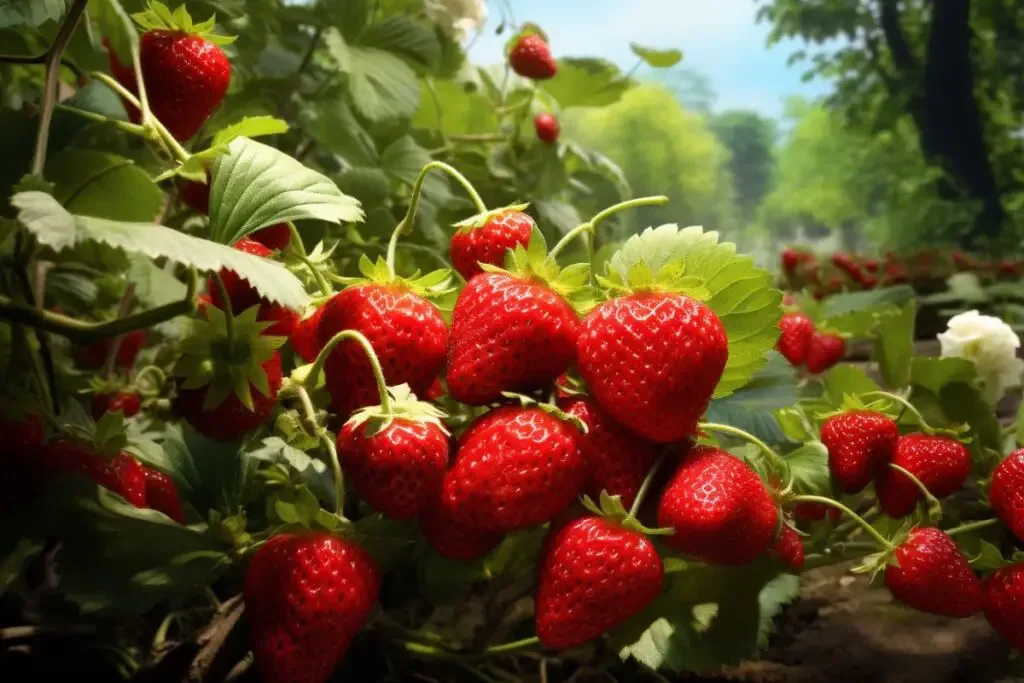
1. Fresh, Homegrown Flavor
One of the most enticing benefits of growing strawberries at home is the unparalleled flavor they offer. Store-bought strawberries, while convenient, often lack the full-bodied sweetness and aroma that comes from freshly picked berries.
When you grow strawberries in your garden, you can savor the pure, sun-ripened taste of these red gems right at your fingertips. The satisfaction of plucking a ripe strawberry and enjoying it immediately is an experience no store-bought berry can match.
2. Abundant Harvests
Strawberries are known for their prolific fruiting habits. Once established, a strawberry patch can yield a bountiful harvest year after year.
With proper care and maintenance, you can expect to enjoy multiple rounds of ripe strawberries throughout the growing season. Whether you plan to make jams, or pies, or simply snack on them, homegrown strawberries will provide you with an abundance of delicious fruit.
3. Health Benefits
Beyond their delectable taste, strawberries are a nutritious addition to your diet. They are rich in antioxidants, vitamin C, fiber, and various other vitamins and minerals.
These nutrients offer a range of health benefits, from boosting your immune system to promoting heart health. By growing your own strawberries, you have control over the use of pesticides and can ensure that your berries are as healthy as possible.
My Favorite Strawberry Varieties
Now that we’ve covered the benefits of growing strawberries, let’s delve into some of my favorite strawberry varieties. These varieties are not only easy to cultivate but also promise exceptional taste and adaptability.
1. June-bearing Strawberries
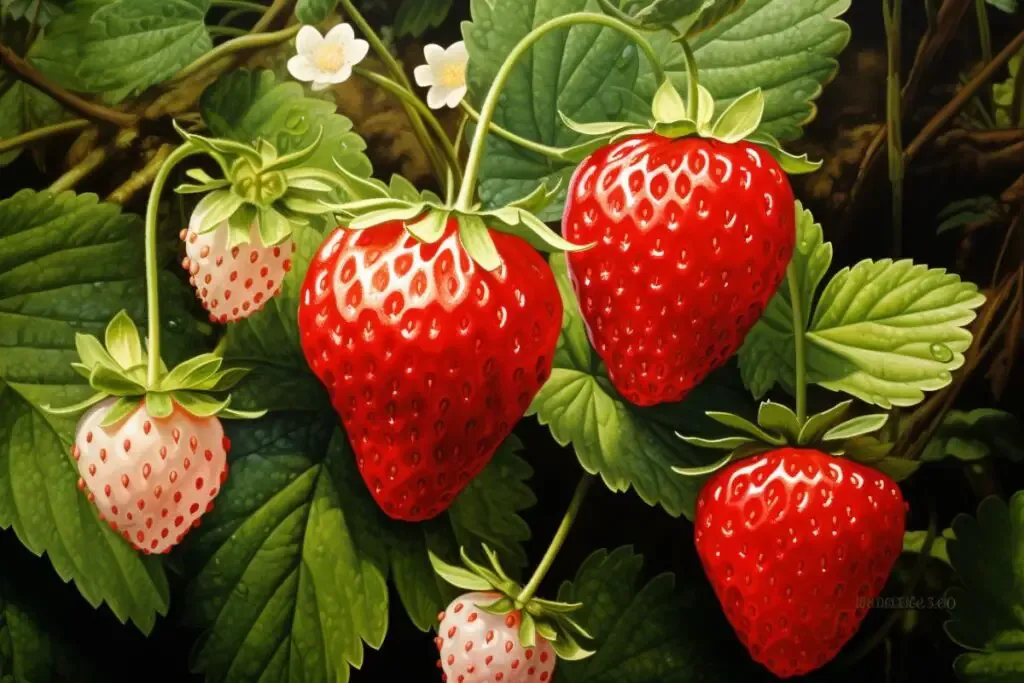
June-bearing strawberries, as the name suggests, typically produce a large crop in early summer. These strawberries are perfect for enjoying fresh or for making scrumptious desserts. Popular cultivars like ‘Everbearing’ and ‘Allstar’ are known for their consistently sweet and juicy berries.
2. Alpine Strawberries
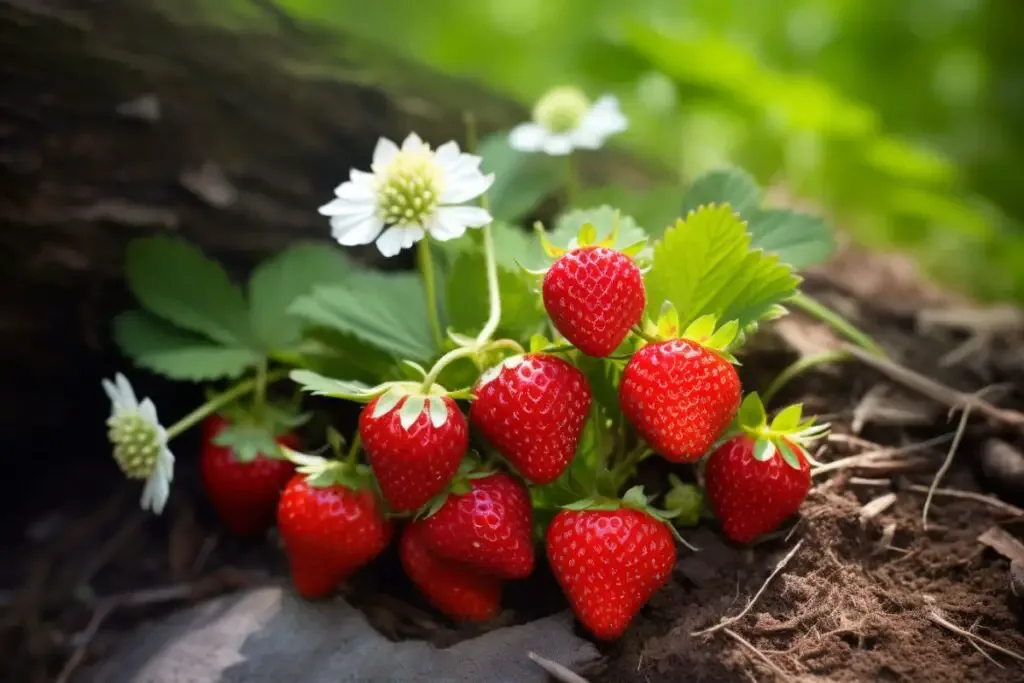
Alpine strawberries are a charming addition to any garden. These smaller, perpetual-bearing berries have a unique, delicate flavor that’s reminiscent of wild strawberries. They thrive in both sunny and partially shaded areas, making them versatile choices for gardeners with varying light conditions.
3. Everbearing Strawberries
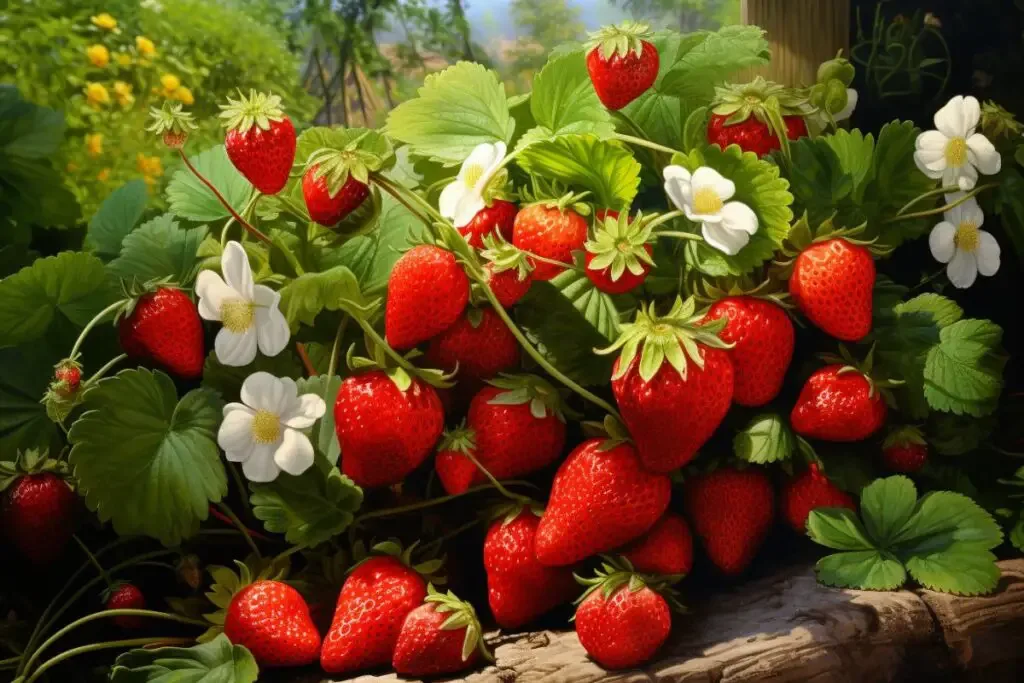
For those who want a more extended strawberry season, everbearing strawberries are an excellent choice. Varieties like ‘Quinault’ and ‘Ogallala’ produce fruit in both spring and fall, giving you a prolonged harvest. Their sweet and aromatic berries are perfect for fresh snacking or for transforming into jams and preserves.
Strawberries Care
Growing strawberries successfully involves providing the right care and attention throughout their life cycle. From planting to harvest, here’s a detailed guide on how to nurture your strawberry plants and ensure a bountiful yield.
Planting
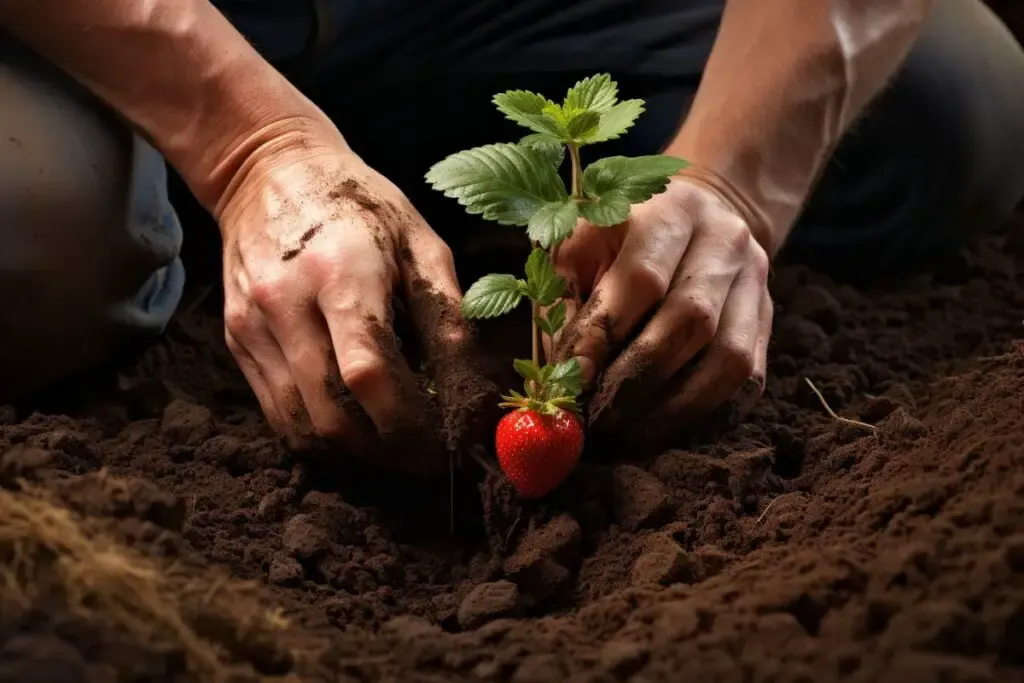
When it comes to planting strawberries, timing is crucial. Spring is the best time to plant bare-root or potted strawberry plants. Follow these steps for a successful planting process:
- Choose the Right Location: Select a sunny spot in your garden that receives at least 6-8 hours of direct sunlight daily. Adequate sunlight is essential for robust berry production.
- Prepare the Soil: Ensure your soil is well-draining and rich in organic matter. Amend the soil with compost to improve its texture and fertility. Raised beds or containers are also excellent options for growing strawberries if your soil is less than ideal.
- Spacing: Plant your strawberry plants 12-18 inches apart in rows, with about 3 feet of space between rows. This spacing allows for good air circulation and prevents disease.
- Planting Depth: Set the plants at the same depth they were in their original container or nursery. The crown (the point where the stems meet the roots) should be at the soil level.
- Water Thoroughly: After planting, water the strawberry plants thoroughly to help them establish their root systems.
Light
Strawberries thrive in full sun, which is essential for robust growth and fruit production. Adequate sunlight ensures that the plants receive the energy they need for photosynthesis and the development of sweet, juicy berries.
If your garden doesn’t receive enough sunlight, consider using reflective mulch to redirect light toward the plants or choose strawberry varieties that are more tolerant of partial shade.
Soil
Strawberries prefer well-draining soil that is rich in organic matter. The pH level of the soil should ideally be between 5.5 and 6.5.
Regularly amending the soil with compost helps maintain good soil structure and fertility. If your soil is less than ideal, growing strawberries in raised beds or containers filled with high-quality potting mix can provide better control over soil conditions.
Water
Strawberry plants need consistent moisture to thrive. Aim to keep the soil evenly moist but not waterlogged. Water deeply whenever the top inch of the soil feels dry.
Avoid wetting the foliage, as this can promote disease. Using a drip irrigation system or soaker hoses can help deliver water directly to the roots while keeping the leaves dry.
Temperature and Humidity
Strawberries prefer cooler temperatures, making them well-suited for temperate climates. They thrive in temperatures between 60°F and 80°F (15°C to 27°C). Adequate airflow around the plants is crucial to prevent fungal diseases, so avoid planting them in areas with high humidity or crowding them too closely together.
Fertilizer
Strawberries benefit from regular feeding to support their growth and fruiting. Fertilize your strawberry plants with a balanced, slow-release fertilizer in early spring when they start actively growing.
Additionally, side-dress with compost or a specialized strawberry fertilizer during the growing season to provide a steady supply of nutrients. Be cautious not to over-fertilize, as excessive nitrogen can lead to lush foliage but fewer berries.
Harvesting Strawberries
Harvesting strawberries at the right time is crucial to enjoying the best flavor and texture from your homegrown berries. Here’s how to do it:
- Ripe Berries: Wait until the strawberries are fully ripe before harvesting. Ripe strawberries are bright red all over, with no green or white areas. They should also be firm and plump.
- Use Scissors or Pruners: To avoid damaging the delicate stems and other berries, use clean scissors or pruners to cut the ripe strawberries from the plant. Leave a small portion of the stem attached to the berry.
- Morning Harvest: It’s best to harvest strawberries in the cool of the morning when the berries are at their firmest and juiciest. Avoid picking in the heat of the day, as the berries may become soft and lose flavor.
- Frequent Picking: Check your strawberry plants regularly during the peak of the harvesting season, as strawberries ripen quickly. Be sure to pick all ripe berries to encourage continued fruit production.
Pruning
Pruning strawberry plants helps maintain their health and productivity. Here’s how to do it:
- Remove Runners: Strawberries often produce runners, which are long stems that grow away from the main plant. While runners can be used for propagation (more on that below), excessive runners can divert energy away from fruit production. Trim them back to keep the plant’s focus on fruiting.
- Trim Old Leaves: After the strawberry harvest season is over, remove old and yellowing leaves to encourage new growth. Be careful not to cut into the crown of the plant.
- Renovation Pruning: In late summer or early fall, perform a more severe pruning known as “renovation.” Trim the plants down to about 1 inch above the crown to encourage fresh, vigorous growth for the next season.
Propagating
Propagating strawberries allows you to expand your strawberry patch without buying new plants. Here are two common methods:
1. Runners
Strawberry plants naturally produce runners, which are horizontal stems that grow along the ground. You can encourage these runners to root by gently pinning them down into the soil with a small stone or a U-shaped wire.
Once they have rooted and established their own plants, you can cut them from the parent plant and transplant them to a new location.
2. Division
Every few years, you can divide your strawberry plants to maintain their vigor. Dig up the entire plant and carefully separate the crown and root system into smaller sections, each with its own set of leaves and roots. Replant these divisions in well-prepared soil, and they will grow into new strawberry plants.
How to Grow Strawberries From Seed
While growing strawberries from seed is less common than propagating from runners or planting bare-root or potted plants, it’s entirely possible. Here’s how to do it:
- Start Indoors: Begin by sowing strawberry seeds indoors in early spring. Plant the seeds in a seed tray or individual pots filled with potting mix. Keep the soil consistently moist and maintain a temperature between 60°F and 70°F (15°C to 21°C).
- Transplant Seedlings: Once the seedlings have several true leaves and are strong enough to handle, transplant them into larger pots or directly into your garden bed. Ensure they have adequate spacing, as they will grow into larger plants.
- Careful Watering: Water the seedlings gently to avoid displacing them. Keep the soil consistently moist, but not waterlogged.
- Harden Off: Before planting your seedlings in the garden, gradually expose them to outdoor conditions to “harden off” over the course of a week or two. This helps them acclimate to the outdoor environment.
Growing in Pots
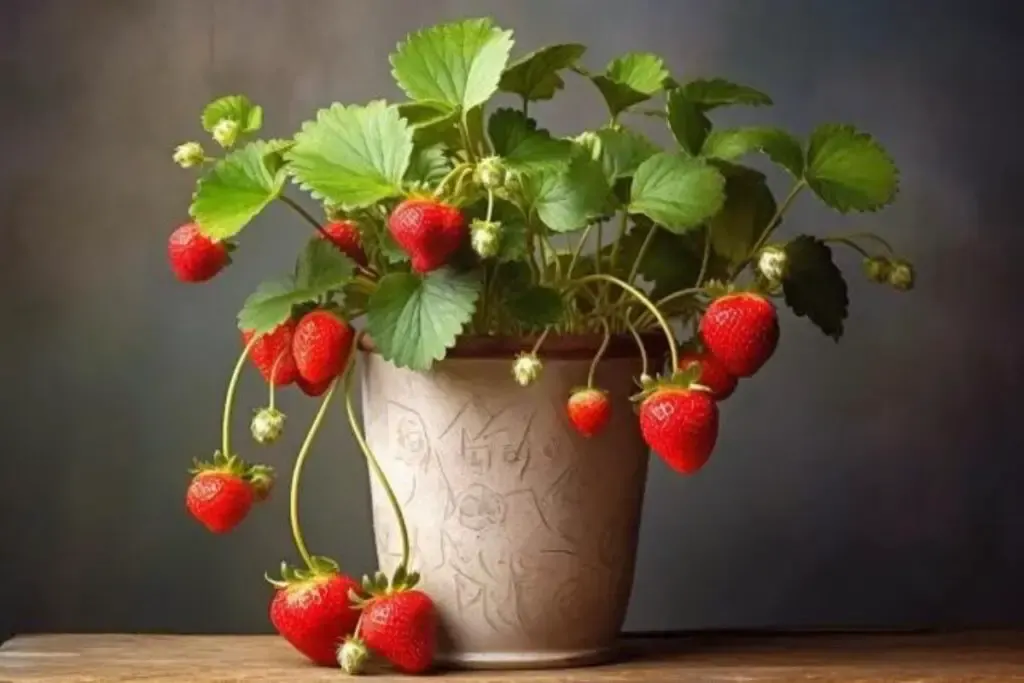
If you have limited garden space or poor soil quality, growing strawberries in pots is a fantastic option. Here’s how to do it:
- Choose the Right Pot: Select a pot or container with a minimum diameter of 12 inches and good drainage holes. A hanging basket or strawberry pot can also work well.
- Use Quality Potting Mix: Fill the container with a high-quality potting mix enriched with organic matter. Ensure the mix drains well.
- Planting: Plant your strawberry plants as you would in the garden, making sure to space them properly. If using a hanging basket or strawberry pot, place plants in the side pockets.
- Watering: Potted strawberries may dry out faster than those in the ground, so monitor the soil moisture regularly and water when the top inch of soil is dry.
- Fertilization: Apply a balanced, slow-release fertilizer as needed, following the manufacturer’s instructions.
With these steps, you can enjoy a thriving strawberry patch even if you have limited space or challenging soil conditions.
Overwintering
Protecting your strawberry plants during the winter months is essential for a successful crop the following year. Here’s how to overwinter your strawberry plants:
- Mulch: Apply a thick layer of mulch, such as straw or pine needles, around your strawberry plants in late fall (after the first frost). This mulch helps insulate the soil and prevents temperature fluctuations that can harm the plants.
- Trim Back: Trim back the foliage to about 1 inch above the crown of the plant after the first hard frost. This reduces the risk of disease and helps the plant conserve energy.
- Remove Mulch: In early spring, once the risk of frost has passed, gradually remove the mulch to allow the plants to emerge. Be sure to monitor the weather and be prepared to cover the plants if late frosts threaten.
Transplanting
Transplanting strawberry plants may become necessary if you want to reorganize your garden or if your plants have outgrown their current location. Here’s how to do it:
- Choose the Right Time: The best time to transplant strawberries is in early spring or late summer when the weather is mild and the plants are not actively fruiting.
- Prepare the New Location: Ensure the new site has the same soil requirements as the original spot, with good drainage and full sun.
- Dig Up the Plants: Carefully dig up the strawberry plants, taking care not to damage their roots or crowns.
- Replant: Plant the strawberries in their new location at the same depth they were previously. Water them thoroughly after transplanting to help them establish.
- Monitor and Care: Keep a close eye on the transplanted strawberries, ensuring they receive adequate water and proper care as they adjust to their new home.
Common Pests & Diseases
Strawberries can be susceptible to certain pests and diseases, but with proper care and vigilance, you can minimize these issues. Here are some common ones to watch for:
Pests
- Aphids: These small insects can cluster on the undersides of leaves and suck sap from the plant. Use insecticidal soap or a strong stream of water to remove them.
- Slugs and Snails: These creatures can damage both the foliage and fruit. Use organic slug and snail baits or physical barriers like copper tape.
- Birds: Birds may be attracted to your ripe strawberries. Consider using netting or reflective devices to deter them.
Diseases
- Gray Mold (Botrytis): This fungal disease can cause fruit rot. Remove and destroy infected fruit promptly and ensure good air circulation in your strawberry patch.
- Powdery Mildew: This fungal disease appears as a white, powdery substance on leaves. Use fungicidal sprays or choose mildew-resistant strawberry varieties.
- Verticillium Wilt: A soilborne fungus that can cause wilting and yellowing of leaves. Plant resistant strawberry varieties and avoid planting in the soil where strawberries or other susceptible plants have grown recently.
By following these guidelines for caring for your strawberry plants, you can enjoy a bountiful harvest of delicious berries year after year while keeping common pests and diseases at bay.
Happy gardening!

